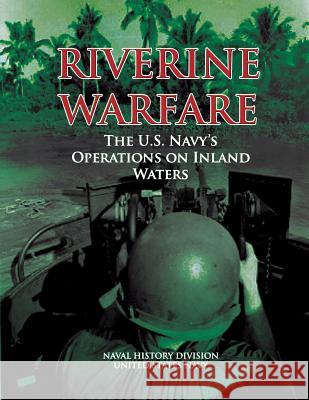Riverine Warfare: The U.S. Navy's Operations on Inland Waters » książka
Riverine Warfare: The U.S. Navy's Operations on Inland Waters
ISBN-13: 9781477598757 / Angielski / Miękka / 2012 / 106 str.
Riverine Warfare: The U.S. Navy's Operations on Inland Waters
ISBN-13: 9781477598757 / Angielski / Miękka / 2012 / 106 str.
(netto: 92,45 VAT: 5%)
Najniższa cena z 30 dni: 96,27 zł
ok. 16-18 dni roboczych
Bez gwarancji dostawy przed świętami
Darmowa dostawa!
The United States Navy has fought on rivers at home and abroad throughout its proud history. In the War for Independence, daring American Sailors employed small boats--even row galleys--against the mighty warships of the Royal Navy operating on colonial waterways. In the War of 1812, hard-fighting U.S. naval units on the Mississippi River helped General Andrew Jackson defeat a major British assault on New Orleans. The only way the Navy could combat hostile Seminole Indians in the trackless expanse of the Florida Everglades during the 1830s was to embark armed Sailors and Marines in small boats that penetrated deep into enemy territory. U.S. naval expeditions up the Tabasco River were an important aspect of the Mexican War of 1846-1848. From the first days of the Civil War, Union and Confederate naval forces battled for control of the Mississippi, the most strategically vital river in North America. Employing ironclad warships in conjunction with U.S. Army troops, the Navy's Mississippi Flotilla bombarded and then seized one Confederate fort after another. Admiral David G. Farragut earned lasting fame when forces under his command fought their way past the bastions guarding the mouths of the Mississippi and captured New Orleans, gateway to the American interior. Riverine units enabled Union General Ulysses S. Grant to envelope and ultimately compel the surrender of enemy forces besieged at Vicksburg. Loss of the Mississippi split the Confederacy and helped bring about its defeat. The early years of the 20th century found the Navy once again mounting river operations in support of U.S. foreign policy. Naval vessels provided gunfire support and transported troops and supplies on rivers in the Philippines to subdue Filipino rebels. For decades before World War II, U.S. Navy warships steamed up and down China's broad Yangtze River protecting American missionaries and traders, battling brigands, and promoting U.S. diplomatic interests. In addition to deploying hundreds of thousands of troops ashore in major landing operations in the Pacific and the Mediterranean during World War II, Navy amphibious units transported Allied ground forces across the Rhine River for the final defeat of Nazi Germany. One of the most memorable chapters in the Navy's riverine warfare history was the hard-fought struggle for control of the waterways of the Republic of Vietnam. The U.S. Navy, as had the French navy during the First Indochina War of 1946-1954, and the Vietnam Navy in the years afterward, recognized the critical importance of the rivers and canals of South Vietnam for warfighting and waterborne commerce. With the onset of major combat operations in Vietnam during the mid-1960s, the Navy established the River Patrol Force and the Army-Navy Mobile Riverine Force whose charge was to secure the Mekong Delta. During the enemy's Tet Offensive of 1968 and the Sea Lords Campaign of later years, American and Vietnamese river units fought well and hard against a resilient Vietnamese Communist foe. While the Vietnam War ended in failure for the United States and the Republic of Vietnam in 1975, the experience left us with a wealth of information on the nature of modern riverine warfare. Insights abound on the most successful strategies, tactics, techniques, boats and craft, weapons, and equipment employed during the Vietnam War. Consistent with the emphasis in recent years on "green water" and "brown water" operations, beginning in 2005 the Navy worked to establish a riverine warfare capability in the Naval Expeditionary Combat Command. The purpose of the new riverine warfare units, as stated in the Quadrennial Defense Review of 6 February 2006, will be to carry out "river patrol, interdiction and tactical troop movements on inland waterways."
Zawartość książki może nie spełniać oczekiwań – reklamacje nie obejmują treści, która mogła nie być redakcyjnie ani merytorycznie opracowana.











